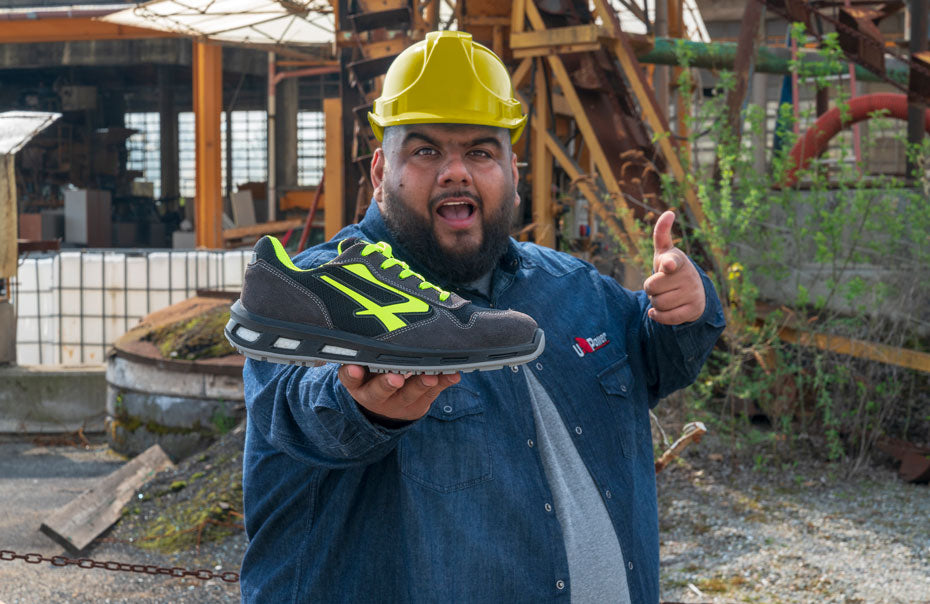Safety Footwear Standards

Before selecting safety footwear for your workers, you should conduct a risk assessment of the workplace. The results of this assessment will indicate which hazards you will need to protect the feet against. This allows you to choose the most suitable safety footwear.
- Wet conditions
- Electrostatic build-up
- Slipping, cuts and punctures
- Heavy, falling objects
- Metal and chemical splash
- Extreme temperatures
- Outdoor or indoor use
Safety ratings explained
Our safety footwear has been manufactured in accordance with CE EN ISO 20345:2011 standards. The safety ratings below are a guide to choosing the correct footwear for your job requirement. All footwear is clearly marked with the safety rating. It is always advisable that a risk assessment is carried out in order to achieve the correct rating required.
The table below outlines the features that each rating under EN ISO 20345 holds:
| SB | Basic safety protection. 200 joule toe cap. |
| SBP | Basic safety protection. 200 joule toe cap. Penetration resistant midsole. |
| S1 | 200 joule toe cap. Closed seat region. Anti-static Energy absorption. |
| S1P | 200 joule toe cap. Closed seat region. Anti-static. Energy absorption. Penetration resistant midsole. |
| S2 | 200 joule toe cap. Closed seat region. Anti-static. Energy absorption. Water absorption. |
| S3 | 200 joule toe cap. Closed seat region. Anti-static. Energy absorption. Penetration resistant midsole. Water absorption and penetration resistant. Cleated outsole. |
| S4 | 200 joule toe cap. All rubber or all polymeric anti-static footwear. Energy absorption. |
| S5 | 200 joule toe cap. All rubber or all polymeric anti-static footwear. Energy absorption. Penetration resistant midsole. Cleated outsole. |
Slip resistance ratings
In addition to the ratings shown above there are some that relate exclusively to slip resistance. These are SRA, SRB and SRC.
To achieve these ratings the footwear it tested in two different ways:
| SRA | Tested on ceramic tile with sodium lauryl sulphate (a dilute soap solution) |
| SRB | Tested on a steel surface with a glycerol contaminant |
| SRC | If the footwear passes both SRA and SRB, it can be deemed SRC |
The test is a mechanical one and the coefficient of friction (CoF) is determined, the higher the COF the better the slip resistance.
A word of warning here – a sole unit with an SRC rating is not always the most suitable for your environment – a lot of SRC rated sole units have small tread patterns which, if you are working on a building site may not give the right grip or stability. Consult a health and safety expert for the right recommendation.
More additional ratings you may see
| C | Conductive |
| A | Antistatic |
| HI | Heat Insulating |
| CI | Cold Insulating |
| E | Energy Absorbing Heel |
| HRO | Heat Resistant Outsole |
| WR | Water Resistant |
| WP | Waterproof |
| M | Metatarsal Protection |
| CU | Cut Resistant Upper |
| P | Penetration Resistance (midsole) |
| ESD | Electrostatic Dissipative |
| FO | Outsole Resistant to Fuel Oil |
If you are still unsure what work boot is best for your foot condition and workplace then we are are happy to offer you advice and guidance. Please give us a call or email and we would be happy to help.
Find O'Sullivan Safety store near you, where you can view the complete range and ensure you get the perfect fit and protection against the hazards in your workplace.


